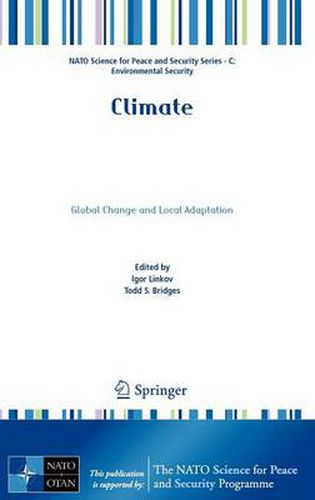Readings Newsletter
Become a Readings Member to make your shopping experience even easier.
Sign in or sign up for free!
You’re not far away from qualifying for FREE standard shipping within Australia
You’ve qualified for FREE standard shipping within Australia
The cart is loading…






This title is printed to order. This book may have been self-published. If so, we cannot guarantee the quality of the content. In the main most books will have gone through the editing process however some may not. We therefore suggest that you be aware of this before ordering this book. If in doubt check either the author or publisher’s details as we are unable to accept any returns unless they are faulty. Please contact us if you have any questions.
Rising sea levels and altered weather patterns are expected to significantly alter coastal and inland environments for humans, infrastructure and ecosystems. Potential land-use changes and population increases, coupled with uncertain predictions for sea level rise and storm frequency/intensity represent a significant planning challenge. While efforts to mitigate climate change continue, plans must be made to adapt to the risks that climate change poses to humans, infrastructure, and ecosystems alike. This book addresses integrated environmental assessment and management as part of the nexus of climate change adaptation. Risk analysis has emerged as a useful approach to guide assessment, communication and management of security risks. However, with respect to climate change, an integrated, multi-criteria, multi-hazard, risk-informed decision framework is desirable for evaluating adaptation strategies. The papers in Part 1 summarize societal and political needs for climate change adaptation. Part 2 includes papers summarizing the state of the art in climate change adaptation. Three further parts cover: the process of change in coastal regions, in inland regions, and, finally, the potential challenges to homeland security for national governments. Each of these parts reviews achievements, identifies gaps in current knowledge, and suggests research priorities.
$9.00 standard shipping within Australia
FREE standard shipping within Australia for orders over $100.00
Express & International shipping calculated at checkout
This title is printed to order. This book may have been self-published. If so, we cannot guarantee the quality of the content. In the main most books will have gone through the editing process however some may not. We therefore suggest that you be aware of this before ordering this book. If in doubt check either the author or publisher’s details as we are unable to accept any returns unless they are faulty. Please contact us if you have any questions.
Rising sea levels and altered weather patterns are expected to significantly alter coastal and inland environments for humans, infrastructure and ecosystems. Potential land-use changes and population increases, coupled with uncertain predictions for sea level rise and storm frequency/intensity represent a significant planning challenge. While efforts to mitigate climate change continue, plans must be made to adapt to the risks that climate change poses to humans, infrastructure, and ecosystems alike. This book addresses integrated environmental assessment and management as part of the nexus of climate change adaptation. Risk analysis has emerged as a useful approach to guide assessment, communication and management of security risks. However, with respect to climate change, an integrated, multi-criteria, multi-hazard, risk-informed decision framework is desirable for evaluating adaptation strategies. The papers in Part 1 summarize societal and political needs for climate change adaptation. Part 2 includes papers summarizing the state of the art in climate change adaptation. Three further parts cover: the process of change in coastal regions, in inland regions, and, finally, the potential challenges to homeland security for national governments. Each of these parts reviews achievements, identifies gaps in current knowledge, and suggests research priorities.